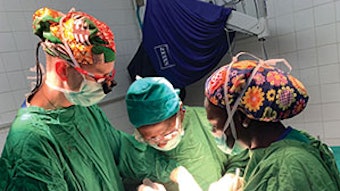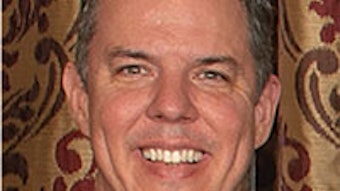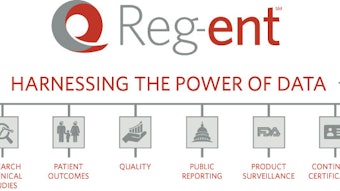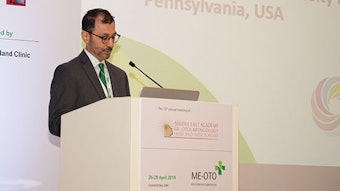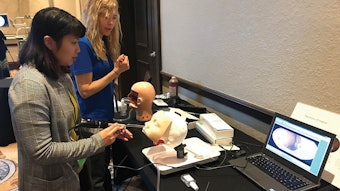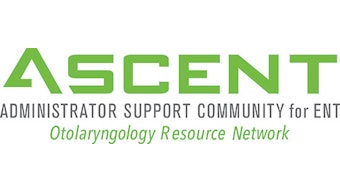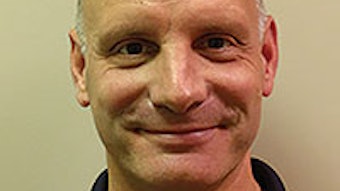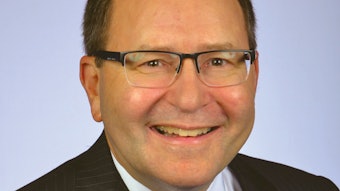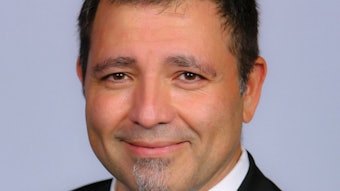Sudden Hearing Loss (Update)
“Sudden hearing loss is a frightening symptom for patients that can dramatically decrease their quality of life. Prompt recognition and management of sudden sensorineural hearing loss may improve hearing recovery and quality of life…”
Clinical Practice Guideline
Adapted from the August 2019 Supplement to Otolaryngology–Head and Neck Surgery. Read the guideline at otojournal.org.

This multidisciplinary guideline update aims to provide clinicians with evidence-based recommendations to evaluate patients with sudden hearing loss (SHL) and sudden sensorineural hearing loss (SSNHL), with particular emphasis on managing idiopathic sudden sensorineural hearing loss (ISSNHL).
“Data show that, while it has been over five years since publication of the original guideline, many clinicians still are not following all of the recommendations. While some of that is from incomplete dissemination, particularly among nonotolaryngologists, some Key Action Statements may be challenging to implement and others may have challenged long-held practices. Although the original guideline was a big step, this update provides an opportunity to improve implementability of the recommendations, use new data to support recommendations that challenge old conventions, and improve awareness of best practices,” said Dr. Schwartz.
Among otolaryngologists, there is high adherence to the recommendations to rule out conductive hearing loss (CHL), avoid routine head computerized tomography (CT) scan, and to perform a retrocochlear workup. There is moderate adherence to the recommendations to avoid routine laboratory assessment and avoid other treatments (nonsteroid/nonHBOT). In this specialty group, however, there is low adherence to the recommendations for patient education regarding the natural history of SSNHL and for counseling regarding hearing rehabilitation. As for the original CPG’s statements regarding systemic steroid therapy as an option for primary treatment and intratympanic (IT) steroid therapy as a recommendation for salvage treatment, otolaryngologists in this study opted to prescribe both interventions—initial oral steroid therapy and salvage IT steroid therapy.
Nonotolaryngologists more commonly ordered routine head CT and performed routine, nontargeted (often called “shotgun”) laboratory assessments despite recommendations against these actions. They did not pursue retrocochlear workup or provide patient education as recommended.
The guideline update group recognized that patients enter the healthcare system with SHL as a non-specific primary complaint. Therefore, the initial recommendations of this guideline update address distinguishing SSNHL from CHL at the time of presentation with hearing loss. They also clarify the need to identify rare, nonidiopathic SSNHL to help separate the patients from those with ISSNHL, who are the target population for the therapeutic interventions that make up the bulk of the guideline update. By focusing on opportunities for quality improvement this guideline should improve diagnostic accuracy, facilitate prompt intervention, decrease variations in management, reduce unnecessary tests and imaging procedures, and improve hearing and rehabilitative outcomes for impacted patients.
Differences from the 2012 guideline include the following:
- Incorporation of new evidence profiles to include quality improvement opportunities, confidence in the evidence, and differences of opinion
- Includes 10 clinical practice guidelines, 29 new systematic reviews, and 36 new randomized controlled trials
- Highlights the urgency of evaluation and initiation of treatment, if treatment is offered, by emphasizing the time from symptom occurrence
- Removal of serial audiometry as a means of assessing for retrocochlear pathology
- Clarification of terminology by changing potentially unclear statements. Use of the term SSNHL to mean idiopathic SSNHL to emphasize that over 90 percent of SSNHL is idiopathic SSNHL and to avoid confusion in nomenclature
- Changes to Key Action Statements (KASs) from the original guideline
- Addition of an algorithm outlining how the KASs integrate into patient care
- Enhanced emphasis on education and shared decision-making with tools provided to assist patients and caregivers
Guideline Key Action Statements (KASs)
KAS1: Exclusion of Conductive Hearing Loss (CHL) – Strong recommendation
Clinicians should distinguish sensorineural hearing loss (SNHL) from CHL when a patient first presents with SHL.
KAS2: Modifying Factors – Recommendation
Clinicians should assess patients with presumptive SSNHL through history and physical examination for bilateral SHL, recurrent episodes of SHL, and/or focal neurologic findings.
KAS3: Computed Tomography – Strong recommendation against
Clinicians should not order routine computed tomography (CT) of the head in the initial evaluation of a patient with presumptive SSNHL.
KAS4: Audiometric Confirmation of SSNHL – Recommendation
In patients with SHL, clinicians should obtain, or refer to a clinician who can obtain, audiometry as soon as possible (within 14 days of symptom onset) to confirm the diagnosis of SSNHL.
KAS5: Laboratory Testing – Strong recommendation against
Clinicians should not obtain routine laboratory tests in patients with SSNHL.
KAS6: Retrocochlear Pathology – Recommendation
Clinicians should evaluate patients with SSNHL for retrocochlear pathology by obtaining an MRI or Auditory Brainstem Response (ABR).
KAS7: Patient Education – Strong recommendation
Clinicians should educate patients with SSNHL about the natural history of the condition, the benefits and risks of medical interventions, and the limitations of existing evidence regarding efficacy.
KAS8: Initial Corticosteroids – Option
Clinicians may offer corticosteroids as initial therapy to patients with SSNHL within two weeks of symptom onset.
KAS9a: Initial Therapy with Hyperbaric Oxygen Therapy – Option
Clinicians may offer, or refer to a clinician who can offer, hyperbaric oxygen therapy (HBOT) combined with steroid therapy within two weeks of onset of SSNHL.
KAS9b: Salvage Therapy with Hyperbaric Oxygen Therapy – Option
Clinicians may offer, or refer to a clinician who can offer, hyperbaric oxygen therapy (HBOT) combined with steroid therapy as salvage within one month of onset of SSNHL.
KAS10: Intratympanic (IT) Steroids for Salvage Therapy – Recommendation
Clinicians should offer, or refer to a clinician who can offer, IT steroid therapy when patients have incomplete recovery from SSNHL two to six weeks after onset of symptoms.
KAS11: Other Pharmacologic Therapy– Strong recommendation against
Clinicians should not routinely prescribe antivirals, thrombolytics, vasodilators, or vasoactive substances to patients with SSNHL.
KAS12: Outcomes Assessment – Recommendation
Clinicians should obtain follow-up audiometric evaluation for patients with SSNHL at the conclusion of treatment and within six months of completion of treatment.
KAS13: Rehabilitation – Strong recommendation
Clinicians should counsel patients with SSNHL who have residual hearing loss and/or tinnitus about the possible benefits of audiological rehabilitation and other supportive measures.
This guideline update is intended for all clinicians who diagnose or manage adult patients (aged 18 years or older) who present with SHL.
The methods outlined in the AAO-HNSF Clinical Practice Guideline Development Manual, Third Edition, were followed in developing this update. (http://oto.sagepub.com/content/148/1_suppl/S1.long)
The full guideline, as well as other resources, are available at www.entnet.org/SHLCPG and in Otolaryngology–Head and Neck Surgery as published at otojournal.org. Additionally, ENThealth.org includes patient-focused information on the topic of SHL that incorporates the key action statements of the update to this guideline.
Guideline authors:
Sujana S. Chandrasekhar, MD (Chair); Betty S. Tsai Do, MD (Assistant Chair); Seth R. Schwartz, MD, MPH (Methodologist); Laura J. Bontempo, MD, MEd; Erynne A. Faucett, MD; Sandra A. Finestone, PsyD; Deena B. Hollingsworth, MSN, FNP-BC, CORLN; David M. Kelley, MD; Steven T. Kmucha, MD, JD; Gul Moonis, MD; Gayla L. Poling, PhD, CCC-A; J. Kirk Roberts, MD; Robert J. Stachler, MD; Daniel M. Zeitler, MD; Maureen D. Corrigan; Lorraine C. Nnacheta, MPH, DrPH; Lisa Satterfield, MS, MPH
Endorsements:
The guideline is endorsed to date by American College of Radiology (ACR), Society of Otorhinolaryngology and Head-Neck Nurses (SOHN), American Academy of Neurology (AAN), American Otological Society (AOS), American Neurotology Society (ANS), The Triological Society, American Speech-Language-Hearing Association (ASHA), and American College of Emergency Physicians (ACEP).
Disclaimer
This CPG is not intended as the sole source of guidance in managing patients with SHL. Rather, it is designed to assist clinicians by providing an evidence-based framework for decision-making strategies. The guideline is not intended to replace clinical judgment or establish a protocol for all individuals with this condition and may not provide the only appropriate approach to managing this problem. As medical knowledge expands, and technology advances, clinical indicators and guidelines are promoted as conditional and provisional proposals of what is recommended under specific conditions but are not absolute. Guidelines are not mandates. These do not and should not purport to be a legal standard of care. The responsible physician, in light of all circumstances presented by the individual patient, must determine the appropriate treatment. Adherence to these guidelines will not ensure successful patient outcomes in every situation. The AAO-HNSF emphasizes that these clinical guidelines should not be deemed to include all proper treatment decisions or methods of care, or to exclude other treatment decisions or methods of care reasonably directed to obtaining the same results.

